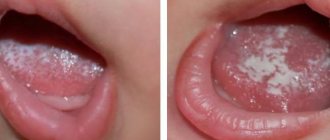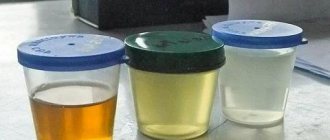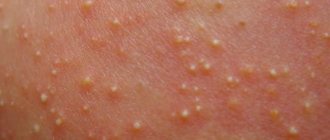Causes
In some cases, your baby's urine may appear bright yellow. This can be triggered by both physiological reasons and pathological provocateurs.
Physiological
Can dietary habits affect this? Yes, lemon-colored urine may appear when your child eats certain foods. They can be colored using artificial dyes. For example, candies, carbonated drinks, marmalade, so loved by children. But urine can also acquire a bright color due to fruits and vegetables - citrus fruits, carrots, pumpkin and others. Natural pigment substances give biological fluid an intense yellow tint. If the doctor sees a note in the laboratory report about the bright yellow color of the urine, then the first thing he will do is ask the parents what the child ate the day before.
Pathological
- Intoxication, acute intestinal infections, which are characterized by vomiting, diarrhea, profuse sweating.
- Pathologies that provoke the appearance of edema.
- Viral diseases accompanied by intense sweating.
- Taking diuretics and laxatives. You should not give such drugs to your child without medical advice. Changes in urine color are perhaps the most harmless of the complications of self-medication.
- Infectious pathologies of the liver.
- Biliary tract dysfunction.
- High concentration of oxalates in urine.
- Inflammatory pathologies of the genitourinary system.
- Congestion in the kidneys.
- Diseases in which the breakdown of hemoglobin is increased. When this substance breaks down, bilirubin is formed, which is subsequently transformed into urobilin, which in excess concentration gives the urine a bright yellow color.
Pathological causes of shade modification also include insufficient fluid intake and excessive physical activity coupled with a small amount of drinking. Taking certain medications and vitamins.
If not enough water enters the child's body, it is intensively reabsorbed in the kidney tissue. Because of this, the urine concentrates and acquires a bright yellow tint. Therefore, it is important to ensure that the child consumes a sufficient amount of liquid, not only in the form of tea, juice, compotes and other drinks, but also simply in the form of clean water.
With excessive physical activity, as well as in case of profuse sweating (due to hot weather or as a result of illness), urine becomes brighter for the same reason - as a result of strong concentration. Under no circumstances should you be allowed to become dehydrated. If a child plays sports and attends training, he should be given a bottle of clean water with him. And in case of illness, which provokes excessive sweating, you need to regularly give your baby something to drink.
The reason for the change in the color of urine can also be the use of medications and vitamin-mineral complexes. Antibiotics of the nitrofuran group (Rifampicin) and vitamins A, C and B (especially riboflavin, vitamin B2) are common provocateurs of bright lemon-colored urine.
One of the most dangerous causes of urine color modification is viral hepatitis. With inflammation of the liver parenchyma, symptoms such as yellowness of the mucous membranes and sclera, skin, weakness and drowsiness appear, and an increase in body temperature is possible. Urine in this group of diseases becomes bright yellow.
Due to inflammatory changes in the gallbladder and dyskinesia of the bile ducts, in addition to changes in the color of urine, vomiting, diarrhea, increased body temperature, and pain in the right hypochondrium are observed. Dyskinesia can cause jaundice, acholia of feces, and skin itching.
Nephrolithiasis in childhood is quite rare. The formation of stones in the urine can be caused by an excess of certain salts in the diet. Also, the causes may be diseases of the digestive system - gastritis, peptic ulcer. Stones can cause renal colic in a child. This condition is accompanied by severe pain in the lumbar region and requires immediate hospitalization.
Diseases such as cystitis and pyelonephritis can also cause the color of urine to change to a brighter one. With hydronephrosis, this is also possible due to the progression of congestion.
Another dangerous factor is pathologies in which intensive death of red blood cells is observed. Their list should include the following diseases:
- Sickle cell anemia.
- Hemolytic anemia.
- Thalassemia.
- Gilbert's disease.
For example, in the case of hemolytic anemia, accompanied by massive death of red blood cells, a large amount of the final breakdown product of heme (iron-carrying molecules) - urobilin - accumulates in urine. Because of this, the color intensity of the biological fluid becomes much brighter.
Interpretation of urine in infants by color and smell
Color
The color of a newborn's urine can vary from light yellow to dark amber.
In the first days of life, urine may be light, but if the volume of fluid consumed is small, then we can talk about a high concentration, especially if the color has changed to a darker shade. Such urine can irritate the baby's delicate skin due to its high salt content. As a result, leaving a baby without diapers turns out to be dangerous, especially if the diaper is not changed immediately. If the color has a pronounced yellow color for a long time, then this indicates kidney and liver disease. Problems in the biliary system can only be detected by the presence of bilirubin in the baby’s urine, for which appropriate laboratory tests are performed.
The alarm should not be raised when vegetable products in the form of carrots and beets are introduced to the baby as complementary foods. After dinner with vegetable puree, you can already expect a change in the color of the baby’s urine.
The rich color of a baby's urine indicates its high concentration, which is caused by a lack of fluid intake, an acute intestinal infection, or a high salt content.
Smell
Normal for a baby is a faint odor of the secreted fluid without any side impurities. If the smell gives off the characteristic aroma of rotten apples, this indicates an increased content of acetone in the urine. It is necessary to carry out all tests to identify the cause of the formation of this substance.
Ketone bodies that affect the formation of acetone appear due to:
- constipation;
- intoxication through the use of medications or drugs prohibited for the baby;
- gastritis;
- strong physical activity, which also occurs in infants;
- changing foods that are poorly absorbed by the body;
- body infections;
- hypothermia;
- agitation or constant fatigue, which is facilitated by disturbances in the body.
The smell of ammonia in the urine of a newborn indicates cystitis. Bacteria decompose urine already in the bladder and an inflammatory process occurs, which can only be treated with medication.
If the color of the liquid secreted by the baby is not suitable for immediate contact with a specialist, then the smell is a direct route to all laboratory tests. The smell of acetone may indicate the development of diabetes mellitus in a child, and the smell of ammonia may indicate the presence of a malignant tumor.
Recommendations
The first thing to rule out is the influence of food. You should not give your child sweets with harmful artificial additives. But eating fruits and vegetables should also be in moderation - excess can cause not only a change in the color of urine, but also allergies.
In addition, you need to pay attention to correcting your drinking regime. The child must consume a sufficient amount of fluid, which depends on age and physiological parameters. Children need to be given clean water and healthy fruit drinks.
If the influence of these factors is excluded, you should immediately consult a doctor. Only a specialist can determine the specific reason why the urine has changed its color. And only after a full examination, the doctor will prescribe treatment to correct the situation. Not all provocateurs of such a seemingly insignificant symptom are harmless. Early detection of a serious disease is a significant factor in the effectiveness of therapy.
Keeping children healthy is an important task for mothers. In the flow of daily worries, we manage to monitor the slightest changes in the mood and well-being of our children. One of the harbingers of impending danger is yellow urine in a child.
Causes of pathology
The normal healthy color of urine comes from the pigment urochrome, which occurs when hemoglobin breaks down. The range of reasons why the healthy color of urine changes and the urine becomes orange is wide - from life-threatening to completely harmless. There are 4 main reasons why urine turns amber-orange:
- The concentration of internal pigments (urochrome) exceeds the norm. The urethra secretes a higher concentration in the morning. In this case, orange urine appears due to hormonal reasons.
- The diet consists of foods with dyes - natural and artificial.
- Dehydration of the body during physical activity. You should take more fluids.
- Medicines containing dye cause changes in the color of urine.
- Late toxicosis in pregnant women.
- Urethral disease, intestinal disease.
What is urine?
Urine or urine is a biological fluid secreted by the body. Through urine, processed and, among other things, harmful substances are removed from the body.
Normally, about two liters of fluid are removed from the body during the day. The composition and amount of urine produced may vary. This depends on many internal and external factors (diet, fluids drunk, climate, physical and nervous stress, functioning of internal organs).
The chemical composition of urine indicates metabolic processes and the functioning of several organs and systems at once. Since ancient times, doctors have learned to diagnose diseases by the composition of urine (color, smell, additional inclusions). Today, diagnostic tools are advanced. And in the laboratory, using special equipment, the exact chemical composition of the biological fluid is measured. This makes diagnosis easier and increases diagnostic accuracy.
Meanwhile, we still focus on the most basic indicators - color and smell of urine. And attentive parents clearly monitor them. Since changes in these indicators may indicate possible disturbances in the functioning of internal organs.
What is the normal shade of urine?
The state of the biological fluid (urine) we secrete is a complete source of information about the processes occurring in the body. Changes in its composition, pigment, thickness, smell, additional inclusions may indicate both serious disorders and improper nutrition, drinking, and natural processes.
At an early age, when the baby is still feeding on mother's milk, the color of urine can be pale yellow or even colorless. Gradually, with the introduction of complementary foods, the color becomes richer and the smell becomes more pungent.
Normally, a grown-up baby's urine color ranges from light yellow to yellow. The shade may vary depending on diet and time of day. After a night's sleep it is brighter.
Treatment
The appearance of orange urine should be a reason to consult a doctor. Based on studies of the biochemical composition of blood and urine and other diagnostics, appropriate treatment will be prescribed.
Pregnant women should undergo regular examination by a gynecologist.
To get a complete picture of the disease, the doctor will send you for an ultrasound of the bladder, kidneys, and liver examination. If a disease related to the genitourinary system is detected, treatment will be carried out by a urologist.
For effective treatment, it is necessary to identify the root causes of the disease that led to deviations from the norm. It is possible that poor nutrition has caused disturbances in the body. In this case, treatment is prescribed and the diet is changed. Health directly depends on the patient’s lifestyle.
Natural causes of urine color change
The color of urine can tell an experienced doctor a lot and help an attentive parent prevent the possible development of a serious illness. However, a change in urine color may not always indicate an impending threat.
If you notice that your urine has become a deep yellow or light brown color, answer the following questions:
- were there any changes in the usual diet;
- how much liquid does a child drink per day?
The amount of liquid that a person drinks significantly affects the internal processes occurring in the body. A sufficient amount of fluid creates the necessary balance in the body. Lack of water can cause dehydration, which affects your overall health. And also on the color of urine (it becomes bright orange). Along with urine, waste and toxins are removed. If there is a lack of fluid, the genitourinary system cannot cope with the task. Some harmful substances may enter the body.
Medicines can also cause discoloration. Vitamins, antibiotics or antimicrobial agents affect the color of the excreted fluid. It becomes a rich yellow-orange or bright yellow color. Vitamins and dietary supplements have the same effect.
Foods with bright colors also affect the color of urine (carrots, beets, colored soda, etc.). Excess salt and seasonings affect the processes of food digestion and, accordingly, the color of urine.
The color of urine changes throughout the day. In the morning it is rich in color, as the substances accumulated during the night are removed. In the evening, especially with heavy drinking, it becomes lighter.
So, there are four reasons that lead to a natural change in shade:
- dehydration (especially during hot periods with profuse sweating);
- use of certain substances or products;
- excessive salt intake;
- The morning portion of urine is always more saturated in color, since metabolic products accumulate in it overnight.
If the cause of bright yellow urine is natural, then within 24 hours the color will return to its previous state.
When to be careful
The main reasons that should serve as a reason to visit a doctor:
- unpleasant odor of urine;
- pain in the lower abdomen;
- temperature increase;
- vomit;
- pain and burning when urinating;
- frequent urge to urinate.
The combination of these symptoms with a change in urine color should alert you, as this is evidence of a serious illness. It can be:
- pyelonephritis is an infectious kidney disease accompanied by inflammation. Intensive proliferation of bacteria leads to an increase in the production of waste products, which is why urine becomes dark in color;
- kidney stones, which provoke oxalates, the main culprits of the red color of urine;
- hematuria. As stones move through the urinary canals, their surfaces are damaged, blood enters the urine and changes its color. Accompanied by pain in the lower back and genitals;
- glomerulonephritis - impaired filtration and the appearance of inflammation in the glomeruli of the kidneys. The color of the urine becomes bright orange, swelling appears on the face.
Urine in the morning contains an increased amount of pigments, so darkening it at this time does not always indicate disorders in the body.
This is a consequence of the accumulation of antidiuretic hormone, which allows the body to go without urinating for a certain time. Red-colored urine in men indicates inflammation of the prostate gland, a phenomenon often found in the elderly. Red urine may be a symptom of kidney disease.
Redness of urine is observed in women with cystitis. This is an inflammatory disease of the bladder. Hypothermia may be the cause. Treatment is prescribed by a doctor.
During pregnancy, orange-colored urine in women indicates dehydration due to toxicosis. Frequent vomiting leads to excessive removal of water from the body. Although pregnant women are receiving fluid therapy, orange urine should alert you to a possible kidney check.
Taking medications such as phenolphthalein, rifampicin, amidopyrine, metronidazole, naphthol, phenyl salicylates causes a sharp change in color, even brown. After completing the course of treatment, the urine acquires a yellowish tint.
What affects the change in urine pigment?
The composition of urine indicates the metabolism occurring in the body. If it is very active, the color and smell will be pronounced. Physical activity and increased stress affect the metabolic process and put additional stress on the kidneys.
There is such a substance - bilirubin. This is a pigment. It turns urine yellow. Bilirubin is formed due to the breakdown of red blood cells. The metabolism of bilirubin is associated with the functioning of many systems and organs, which is why urine analysis is so often used in diagnosis. When organ functions are disrupted, more substances enter the biological fluid, which affects the color of urine - from bright yellow to deep brown.
The levels of bilirubin in urine differ in people of different ages. In newborns, increased levels of the substance are considered normal. This is due to adaptation to new conditions. The so-called jaundice of newborns usually goes away on its own, without additional intervention.
In infants up to one month old, the normal concentration of the substance is from 2 to 20 µmol per liter. Over one month, the indicator changes - from 3 to 20 µmol per liter. In older children, the norm is considered to be a concentration from 3.4 to 17.1. If the levels are elevated, additional tests are taken, including a blood test. It is important to pay attention to the collection of analysis and its storage. It is necessary to exclude the possibility of foreign substances entering the container. To do this, wash the child well and take a sterile jar.
Interpretation of urine in infants by color and smell
Color
The color of a newborn's urine can vary from light yellow to dark amber. In the first days of life, urine may be light, but if the volume of fluid consumed is small, then we can talk about a high concentration, especially if the color has changed to a darker shade. Such urine can irritate the baby's delicate skin due to its high salt content. As a result, leaving a baby without diapers turns out to be dangerous, especially if the diaper is not changed immediately.
If the color has a pronounced yellow color for a long time, then this indicates kidney and liver disease. Problems in the biliary system can only be detected by the presence of bilirubin in the baby’s urine, for which appropriate laboratory tests are performed.
The alarm should not be raised when vegetable products in the form of carrots and beets are introduced to the baby as complementary foods. After dinner with vegetable puree, you can already expect a change in the color of the baby’s urine.
The rich color of a baby's urine indicates its high concentration, which is caused by a lack of fluid intake, an acute intestinal infection, or a high salt content.
Smell
Normal for a baby is a faint odor of the secreted fluid without any side impurities. If the smell gives off the characteristic aroma of rotten apples, this indicates an increased content of acetone in the urine. It is necessary to carry out all tests to identify the cause of the formation of this substance.
Ketone bodies that affect the formation of acetone appear due to:
- constipation;
- intoxication through the use of medications or drugs prohibited for the baby;
- gastritis;
- strong physical activity, which also occurs in infants;
- changing foods that are poorly absorbed by the body;
- body infections;
- hypothermia;
- agitation or constant fatigue, which is facilitated by disturbances in the body.
The smell of ammonia in the urine of a newborn indicates cystitis. Bacteria decompose urine already in the bladder and an inflammatory process occurs, which can only be treated with medication.
If the color of the liquid secreted by the baby is not suitable for immediate contact with a specialist, then the smell is a direct route to all laboratory tests. The smell of acetone may indicate the development of diabetes mellitus in a child, and the smell of ammonia may indicate the presence of a malignant tumor.
What color can a newborn's urine be?
Normally, newborns' urine color is yellow or straw-colored. By the second week it may change to brick. This is a natural process that should not cause concern to parents. At this moment, the baby’s adapting body releases a large concentration of urine.
Jaundice in a newborn can be caused by a greenish or deep yellow pigment. This is due to the restructuring of the kidneys during the transition from intrauterine development. The color should change within a week.
The pink color may be caused by increased urine crystal production. This is not a deviation. And it is not life-threatening.
A dangerous symptom will be pigmentation with a reddish tint. This could be a sign of kidney problems or a cardiovascular problem.
When does urine turn bright yellow?
- dehydration;
- hemolytic disease;
- intestinal infections;
- cirrhosis of the liver;
- physiological jaundice in an infant;
- cardiovascular diseases.
As a rule, these diseases are accompanied by additional symptoms: changes in stool, nausea or vomiting, the smell of acetone, the presence of blood in the urine, a sharp increase in temperature, lethargy and loss of appetite, changes in skin color, pain when urinating, frequent urination, stabbing pain in the sides.
Poisoning causes increased work of the liver and kidneys. Harmful substances are removed from the body and organs work harder. This also affects the pigment of the excreted biological fluid.
When a change in urine color is a dangerous symptom
If the color of the urine does not change within 24 hours, a strong odor appears, sometimes the smell of acetone, you should make an appointment with a doctor.
Changes in urine color may be associated with the development of the following diseases:
- poisoning (vomiting and nausea);
- diseases of the genitourinary system;
- pancreas cancer;
- urolithiasis disease.
These diseases are very serious and can be fatal. Therefore, it is important to get diagnosed by a specialist. The doctor will prescribe a complete list of tests. The main thing will be a urine test.
Let's consider each reason separately
Orange color in urine often appears due to the consumption of certain foods. Products color urine with the help of coloring substances included in their composition. Vegetables, fruits, berries with a high content of carotene, vitamin B and C are the reason for the change in urine color. The orange color is given by:
- carrot;
- sea buckthorn;
- pumpkin;
- persimmon;
- beet;
- rose hip;
- all types of citrus fruits;
- raspberries;
- spinach;
- parsley;
- celery;
- black currant.
Cloudy urine in a child
Along with pronounced pigmentation, another dangerous symptom is turbidity of the biological fluid. The discharge may also contain protein flakes, bloody discharge or mucus. All these manifestations indicate a disruption in the functioning of individual organs and systems of the body, and require additional diagnostics to identify the disease.
A common cause of such manifestations is inflammatory diseases. In young children - kidney disease, bladder disease. As a rule, they are accompanied by accompanying symptoms - pain and pain in the lower abdomen, in the sides, on the sides of the back, pain when the baby pees, frequent urge to go to the toilet, fever, profuse sweating (with kidney disease).
Diagnostics
Fast and timely testing will allow you to correctly diagnose the disease and begin treatment in the early stages of development. This increases the chances of recovery. After contacting a specialist with a problem where amber biofluid is observed, you will need to undergo an examination and take several mandatory tests:
- general urine analysis;
- urine analysis according to Nechiporenko;
- biochemistry of urine;
- checking biofluid for bile enzymes;
- blood analysis;
- Ultrasound of the bladder and kidneys;
- checking the kidneys for function.
How to collect a urine test correctly
Urine is a good material for diagnosing changes occurring in the body. It is very important to collect the analysis correctly. This will avoid errors in diagnosis.
How to collect urine from a child:
- Prepare a sterile jar (you can buy it at the pharmacy).
- Rinse the child with strong, warm water.
- Collect an average portion (some tests require collecting the entire portion, in which case the doctor will give appropriate recommendations).
Please note that if kidney disease is suspected, it is recommended to take tests three days in a row. In this case, you can very clearly trace the change in protein levels in the body and make a correct diagnosis.
Preventive measures for the normal functioning of the genitourinary system
Prevention can save parents from unnecessary worry. For good functioning of the body and proper metabolism, the child needs sufficient fluids.
The norm for drinking liquid per day is one and a half liters. In hot weather, it may increase as sweating becomes more active and removes more fluid from the body.
Diet affects metabolic processes. Eliminate unhealthy foods and foods with dyes (chewing gum, candy, soda). Excessive consumption of salt, seasonings and spicy foods put additional stress on the kidneys.
Proper hygiene, especially for girls. Washing daily, it is important to slightly open the upper labia so that dirt does not accumulate inside.
Clean underwear. Doctors recommend changing it every day after swimming.
How to collect urine from an infant
It's easy to ask an older child to pee in a jar. However, collecting a test from a baby is a real headache for the mother. Our grandmothers came up with several possible methods: holding a saucer to the sound of a stream of water, squeezing out a diaper, etc. All of them are extremely inconvenient and questionable, since the purity of the analysis is violated. This may lead to misdiagnosis.
Life does not stand still. And today there are convenient containers for collecting urine from newborns. These are small bags that are attached to the baby's skin in the groin area with adhesive tape. The baby lies calmly or crawls, the mother can only watch in order to remove the container in time and pour the liquid into a sterile jar.
Changes in urine color can be caused by many reasons. And half of them are natural and do not pose a threat to the child’s health. Therefore, it is so important not to panic, but to analyze the situation and determine the right strategy for further action.
If all natural causes of changes in urine pigment are excluded, you should immediately consult a doctor. Only a specialist will make the correct diagnosis. Self-medication is extremely dangerous.
Being a parent is a big responsibility.
Being a smart parent is great wisdom.
What is acetone, where does it come from and how to deal with it, see the following video:
The color of urine is the main visual indicator of metabolism in the body. Urine in a healthy person has a light yellow tint; in some situations, urine staining dark yellow does not require any therapeutic action. But in most cases, bright yellow urine indicates the progression of various pathologies.
It is important to consult a specialist in time, undergo a series of tests to help make the correct diagnosis, and prescribe the necessary course of treatment. Taking any medications on your own is strictly prohibited. The presence of accompanying symptoms plays an important role, so if you notice a change in the color of urine, remember the presence of pain when urinating, other symptoms and impurities in the urine.
When should you go to a urologist?
If, apart from the abnormal color of the biofluid, nothing bothers you other than the fact that the urine is bright orange, then it is recommended to wait a day. Perhaps the state of urine was affected by diet. When no changes have occurred and the color has not changed, then you need to go to a urologist for diagnosis. The condition of the body may be supplemented by the following symptoms:
- abdominal pain;
- nausea;
- vomiting;
- elevated temperature;
- high blood pressure;
- problems with urination;
- strong smell of urine;
- change in stool color;
- general heaviness.
Note! A change in the color of urine along with a change in the color of stool and skin to a lighter color indicate problems with the liver. You should make an appointment with your doctor immediately. Don't self-medicate!
Healthy urine color
Normally, urine has a light yellow tint. The specific color depends on the amount of urochrome pigment (the final metabolite of red blood cell hemoglobin). The presence of diseases of the excretory system leads to disturbances in the filtration and selective function of the kidneys.
Impaired filtration in the glomeruli of the kidneys leads to the entry of certain elements into the urine, for example, red blood cells, proteins, leukocytes, and failures in reabsorption lead to the return of substances back into the blood. For this reason, the patient's urine is colored in a nonspecific shade. The color of a patient's urine is often used to make an approximate diagnosis.
Symptoms
Depending on the accompanying signs, you can first find out what led to the urine turning bright yellow:
- the absence of additional symptoms indicates physiological reasons for the development of the problem (a side effect after taking medications, eating special foods, alcohol abuse);
- the presence of blood in the urine, painful urination indicates inflammatory processes in the kidneys, excretory ducts, and urolithiasis. The walls of the urinary system organs can be damaged by pathogens or the movement of stones;
- chills, elevated body temperature, and other signs of intoxication are formed against the background of an acute course of infectious processes (cystitis, pyelonephritis, and others).
Only a doctor can determine the exact cause of discomfort. Do not take any action on your own, otherwise it will be difficult to avoid worsening the situation.
Preventive recommendations
It is possible to prevent changes in urine color if certain rules are followed:
- watch your drinking regime. A healthy person is recommended to drink at least two liters of clean water per day. Intense sports, high air temperatures require adjustment of this dose (increase the amount of water by half a liter);
- Treat diseases of the genitourinary system in a timely manner. Most cases of changes in urine color are based on the background of pathologies in this area;
- During pregnancy, take only those medications prescribed by your doctor. Self-medication can lead to unwanted side effects (non-specific color of urine);
- Before eating brightly colored foods, be prepared for the possibility that your urine may change color. Don’t be alarmed in this situation; increase the amount of fluid per day, which will help quickly remove the “coloring” components of a drink or dish.
Find out more about what the color of urine means after watching the following video:
«>
Orange urine during pregnancy
In women during pregnancy, changes in the color of urine are explained by toxicosis in the early stages. If girls suffer from late toxicosis, the disease is called gestosis. Doctors point to plasma leaving the bloodstream, which leads to a decrease in circulating blood and dehydration of the body. Frequent vomiting and loss of fluid in a girl also causes a change in the color of the urine. In such cases, you should replenish fluid in the body and drink more often. You should definitely contact a specialist who, after the examination, will give individual advice.
During pregnancy, if dehydration occurs, the woman undergoes infusion therapy, which will replenish water in the body and the color of the biofluid should be normalized. Of course, pregnant women should not lose sight of this seemingly minor symptom, because the color of urine may also indicate health problems.











